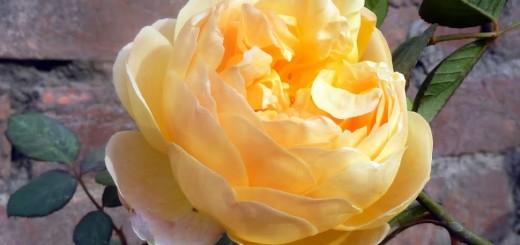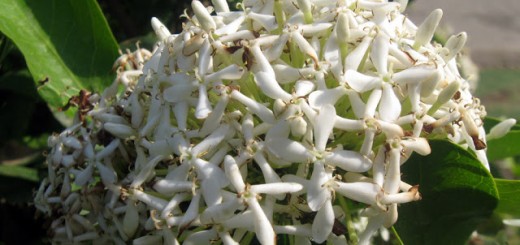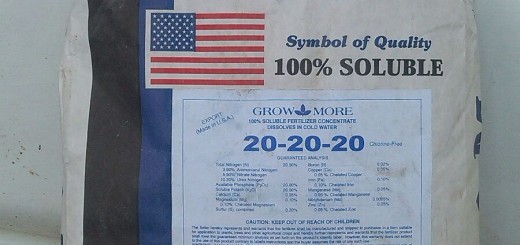Here i would like to share some plants fertilizing tips and tricks i learned over time. Note that this is my personal experience and some of you might have a different experience depending upon climate and conditions, so do share your experience in form of comments.
General Tips
- Less is better. Small frequent doses are better than big doses after large gaps of time.
- Generally speaking, potted plants require more fertilizer than the ones in soil bed.
- Drench is the process of mixing water soluble fertilizer in water and then irrigate your plants. It is also called fertigation.
- Foliar feeding means spray the plant leaves. Note that leaves undersides are important for spraying whether spraying fertilizer or pesticides.
- Foliar feeding should always be done in evening preferable within last two hours before sunset.
- Foliar feeding acts very fast probably 200% more fast than drench. So effects are visible in within few days. But its effects are not as long lasting as drench.
- Foliar feeding has risk of burning plant leaves so experiment with dilute amounts then experiment with gradually increasing the dose in water. Do not rely solely on foliar feeding. Some plants better respond to foliar feed while some like the drench that depends on micro climate and also on the plant.
- For seedling, fertilizer (either foliar or drench) as early as after 15 days of sprouting and dilute by 1/4th of recommended fertilizer strength.
- Not every water soluble fertilizer is suited to foliar feeding. If it can be used for foliar spray then it would usually be written explicitly on the packet that it can be sprayed for foliar feeding. Some fertilizers are highly concentrated so they are advised for irrigation not for foliar.
- Prefer those fertilizers on which it is mentioned that nutrients are chelated for use.
- Apply fertilizer when plants are in active growth and not when they are dormant
- Do not apply fertilizer to sick and stressed plants. First, eliminate the reason for illness of plants and then fertilize. If you have to apply fertilizer to an ailing plant then give it in extremely low dose.
- Do not fertilize a plant which you have just transplanted. Let it settle and establish roots then start feeding. It does not mean that you cannot mix any fertilizer in its planting hole.
- Legumes (Plants from Fabaceae/Leguminosae Bean family) are natural nitrogen fixers so do not need high nitrogen content. Wisteria is one example. Similarly hibiscus does not like high phosphorus so give fertilizer according to the plant requirements where possible.
- Remember, plants never die of under-nutrition but they can die because of over-fertilizing.
- Store inorganic fertilizer in air tight bag or container. They have a shelf life so do not use after expiry date.
Organic Fertilizers
Here are some of the organic fertilizers i have personally used so far.
- Leaf mold
Excellent for pots. Improves soil structure. Use it in clay soil for making it loamy and porous. It is cool in nature so used frequently in summer. Note that it must be properly decomposed else it will burn the plants. Older is better specially two years old. Decomposed in pit is the best one. Ideal state is very fine compost just like tea leaf tea and it should not stink. If you have large garden then you can prepare your own leaf compost too. You can get it from nurseries easily. I use a large sieve to remove debris (stones, wooden stems) before using it.
- Cow dung manure
It is more suited to soil bed as compared to pots. It is a bit stronger than leaf mold in efficacy. Not properly decomposed manure has usually high levels of ammonia and potentially dangerous pathogens and weeds seeds too. It is warm in nature so used in winter mostly. Well rotted cow manure contains beneficial bacteria and very good for aeration of soil. It improves drainage but not a big source of nutrients. It must also be fully decomposed or will burn the plants. It is easily available from nurseries. Insist on buying at least one year old and it must not smell bad.
- Plant Fert / Bio Fert
It is available in Lahore and other cities too. It is claimed to be a mixture of sugar cane press mud, poultry chicken manure and maybe leaf mold. It is light in nature and can be used in pots. I have used as much as 50% ratio in pots with no harm.
- Seaweed Extract (Kelp)
It is not a fertilizer but extract from sea plants and algae which grow in water. It contains lots of plant growth hormones, compounds which are natural and increase not only the growth of plant but play important role in flowering, fruiting, root growth, plant’s natural defense etc. It is available in Lahore as stand alone tonic and also included as ingredient in other fertilizers. It is usually available in liquid form and mostly used as foliar spray.
Inorganic fertilizers
Remember inorganic fertilizers destroy the soil structure if used for long time. Good compost must be added to soil from time to time if you want to use inorganic fertilizers. Also, these fertilizers if mixed in soil, must not touch the roots or bulbs, and should be mixed away from the trunk.
- Grow more NPK 20-20-20 with micro nutrients
Buy only the original one. It is very effective and contains many micro nutrients. Can be used as foliar too. It is usually in powder form.
- Sultan kitchen garden SSP
It is granular and mixed with soil and then irrigated. It is excellent source of phosphorus and calcium so very important in root development. It works well in potted plants too. You can use it in seedlings too but with low dosage. I personally prefer it over DAP due to various reasons one being cheaper, second, it contains calcium and third, it is acidic in nature so minimize the effect of our alkaline tap water. It is excellent for roses too. DAP contains nitrogen and phosphorus so preferable where nitrogen is needed for leafy growth.
- DAP
It is nitrogen and phosphorus fertilizer mostly in form of granules. It is slow releasing as compared to Urea so i prefer it over urea. You can mix it in water at about 1 gram per litre and water your plants with it. It is recommended at early stages of flowering plants when plant is still establishing.
- NPK 5-15-45 powder form
I bought it from Sky seeds store Lahore and its result varies. I used it both foliar and drench and drench seem to be more effective but it becomes expensive then. Remember the high number of “K” potassium is important for good flowering and fruiting. Professional farmers use “Sulphate of potash” or high potash formula for good flowering and fruiting.
- Cabi -88 amino acids from Green circle
Although it is basically an agriculture product but I used it on my flowering plants with good results as foliar spray. It is very fast acting and results are visible within couple of days. It also claimed to have some plant hormones and sea weed extract along with some NPK. It can also be used as drench. It is in liquid form has bad odor.
It is not available from Pakistan so you have to buy it from overseas. I use it to prevent plants from transplant shock. It is a famous plant tonic with many vitamins. Now it does not do all the wonders it is famous for, but for transplant shock it is very effective. It is highly concentrated so use it in extremely low dosage. It is in liquid form and has very bad odor. It also contains the seaweed extract or kelp for plant growth.
It is a famous slow release fertilizer. I have not purchased it but I have bought some plants which are fed with osmocote. It is granular and one application lasts for around 6 months. You may find it in some imported plants. It is claimed to be very effective too. It is little expensive as well.
Please do share your experience as it will promote a healthy discussion but also help other readers too.





Excellent post! Thanks for sharing. What about Engro Envy NPK 14-14-14 ? Also Where can I buy Grow More original, made in USA in LHR?
I did not try Egro Envy yet but engro is a good brand name so do try it and let us know the results. Grow more original can be either bought in for of large bag the original packing in a group purchase else experiment with small packet if its effect is visible on your plants.
Thank you so much for sharing an informative article. Keep posting.